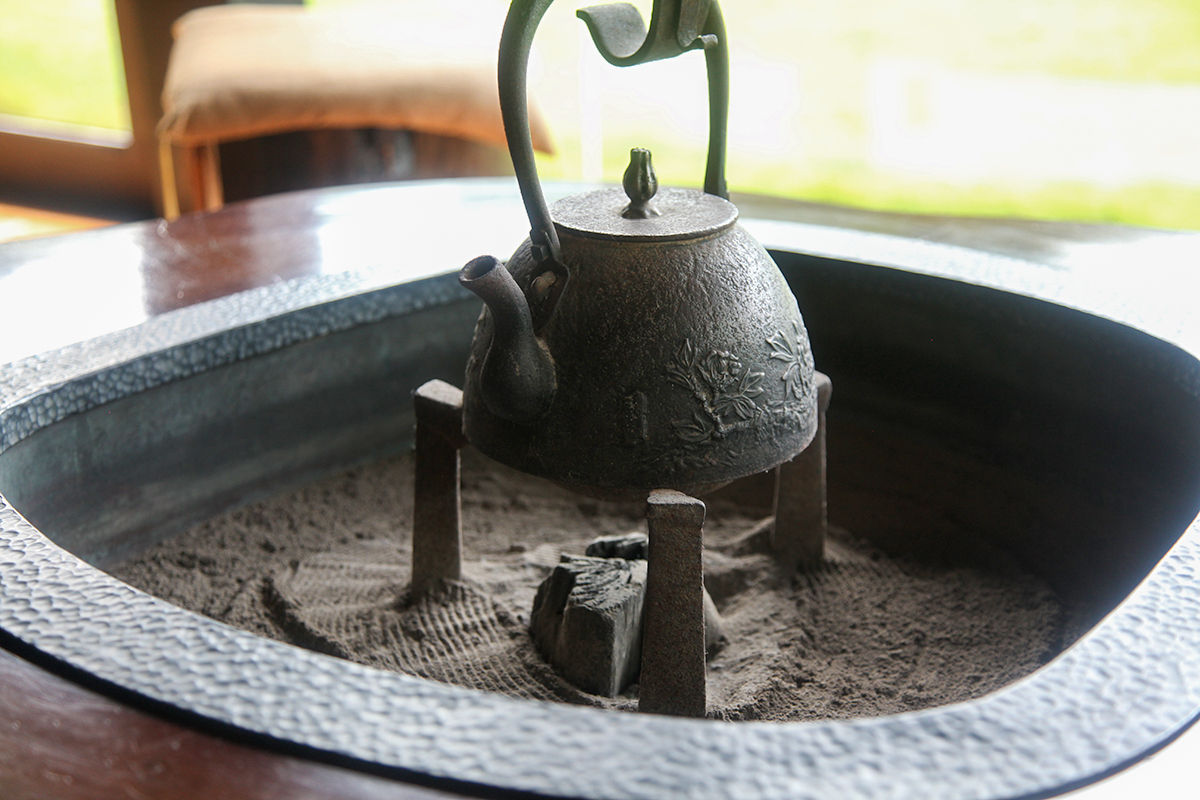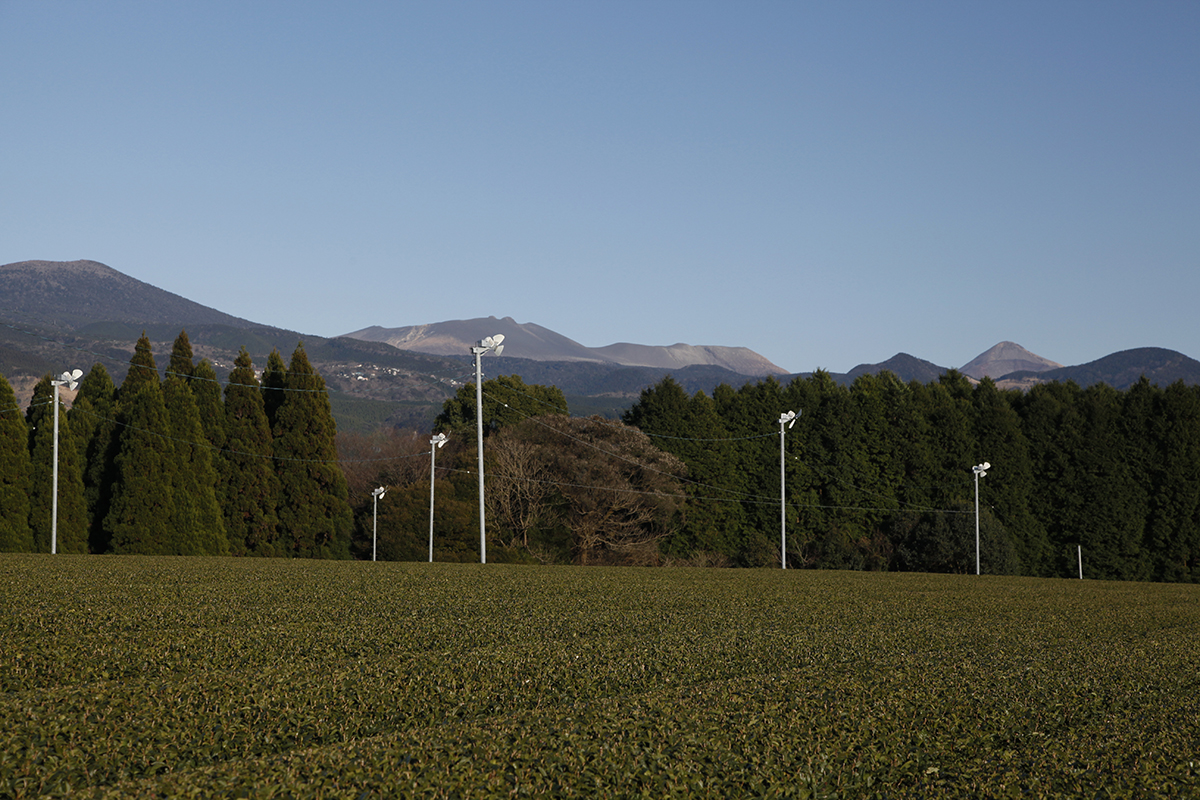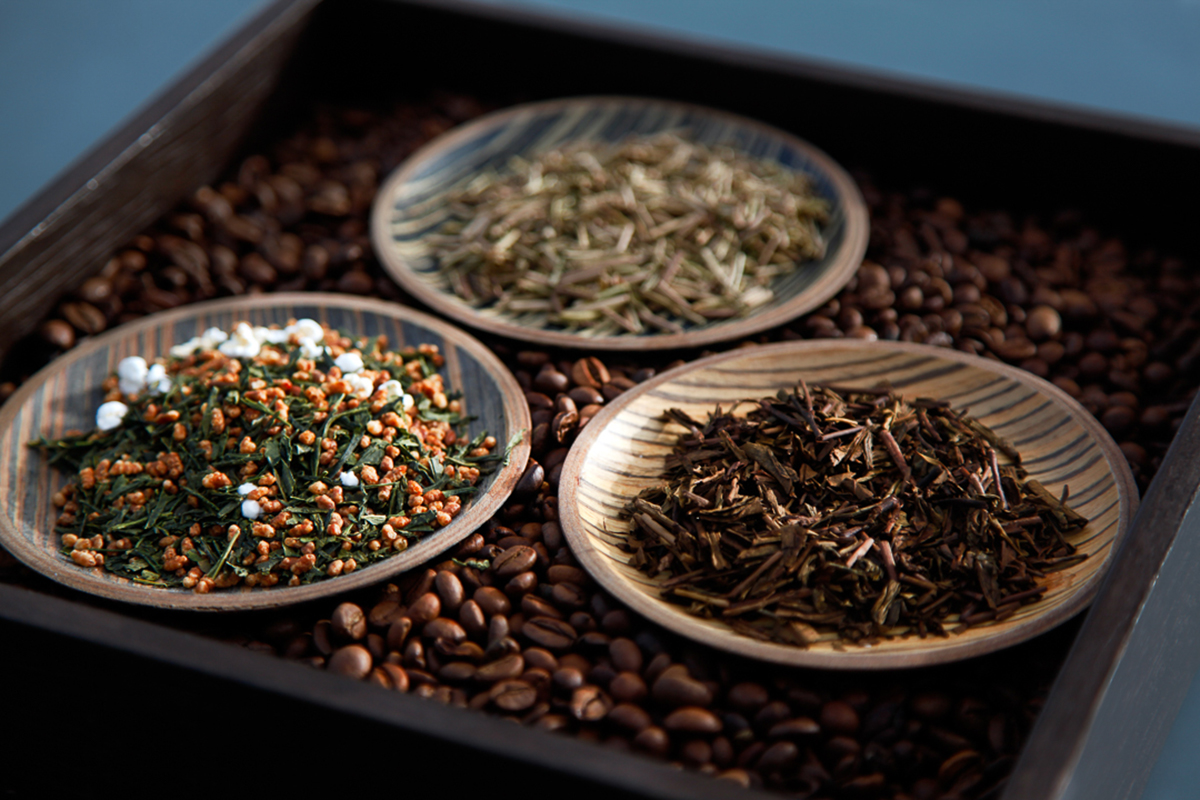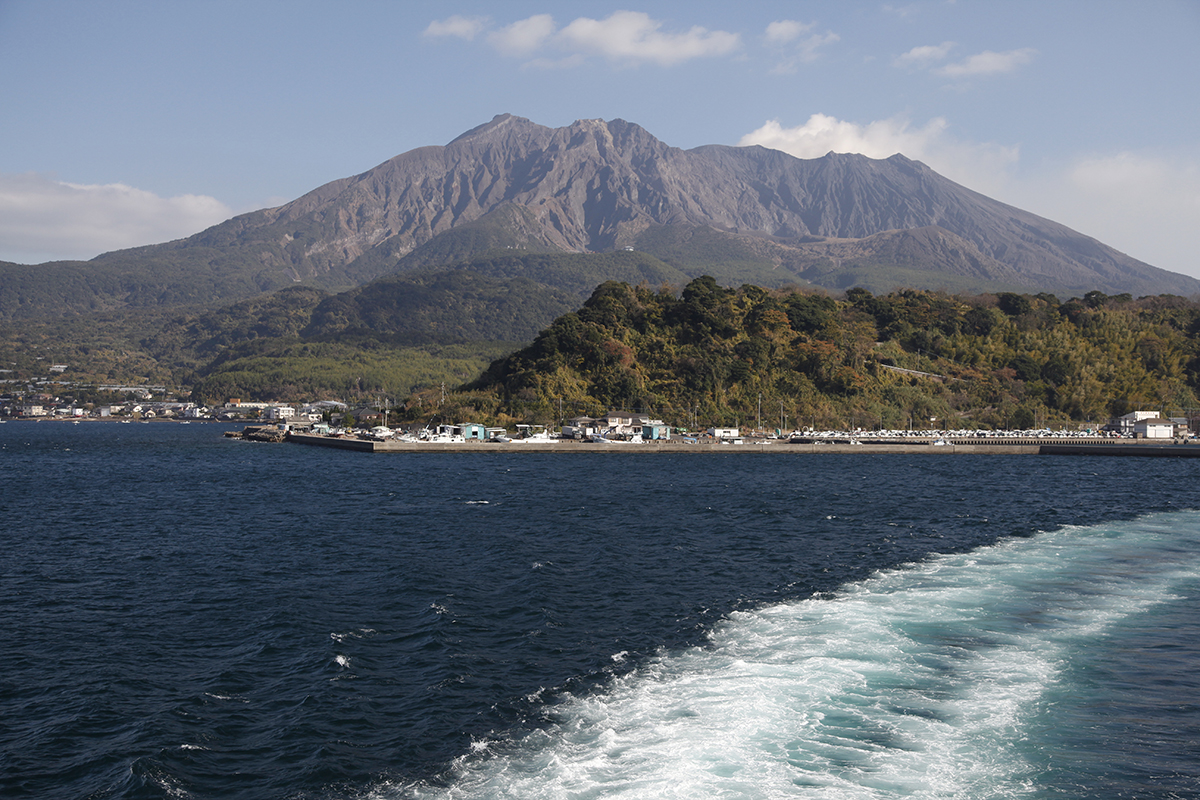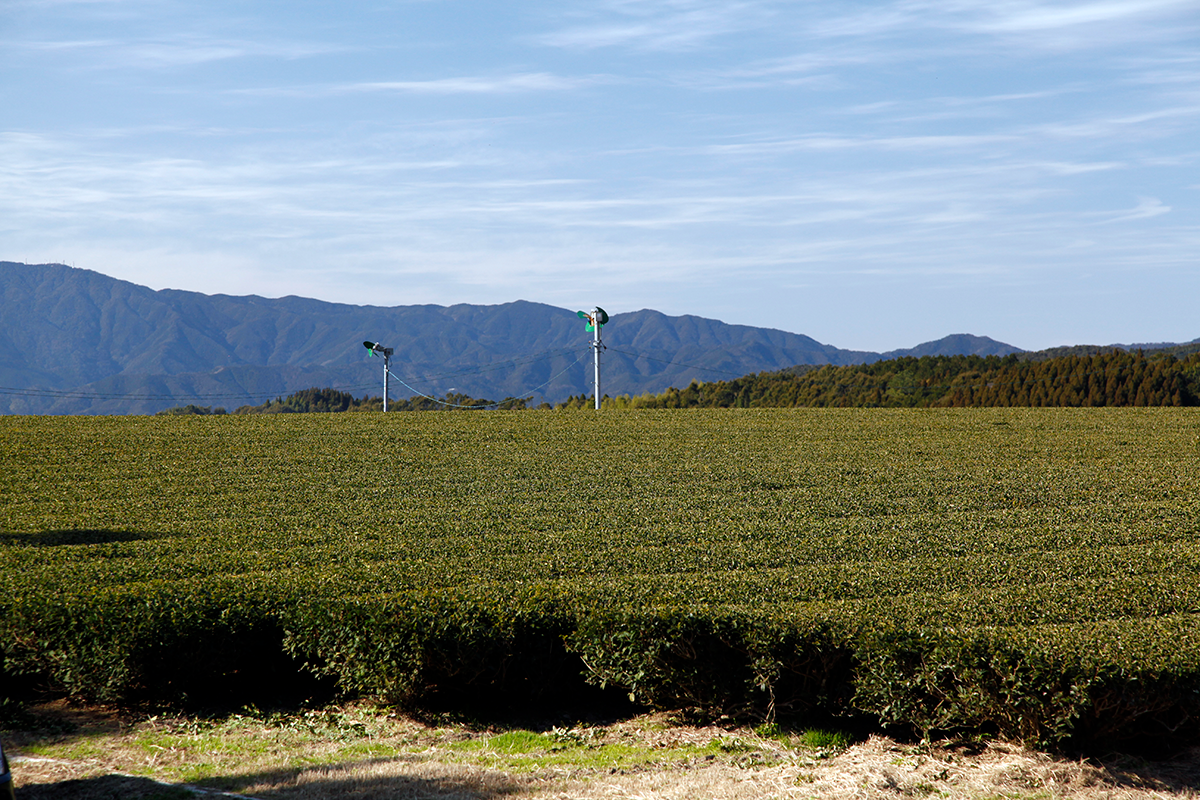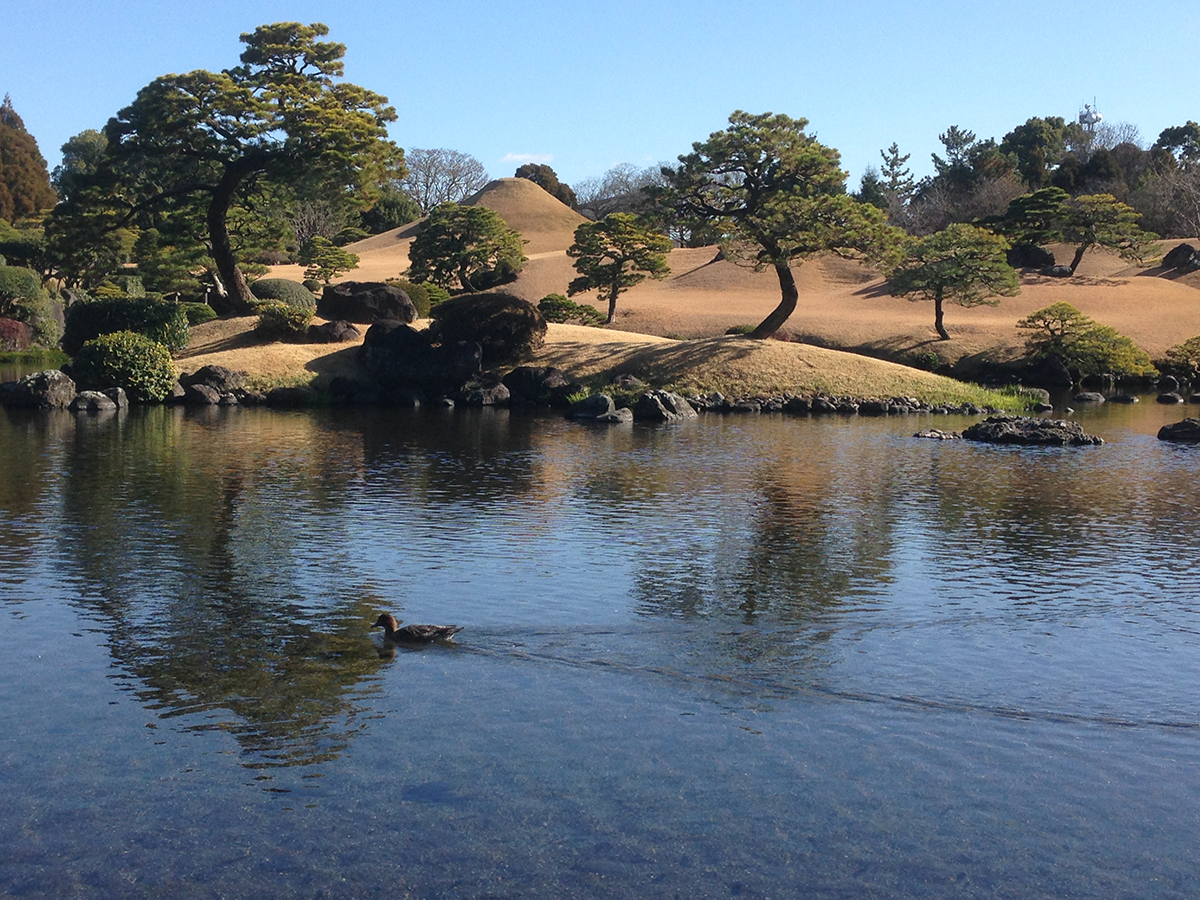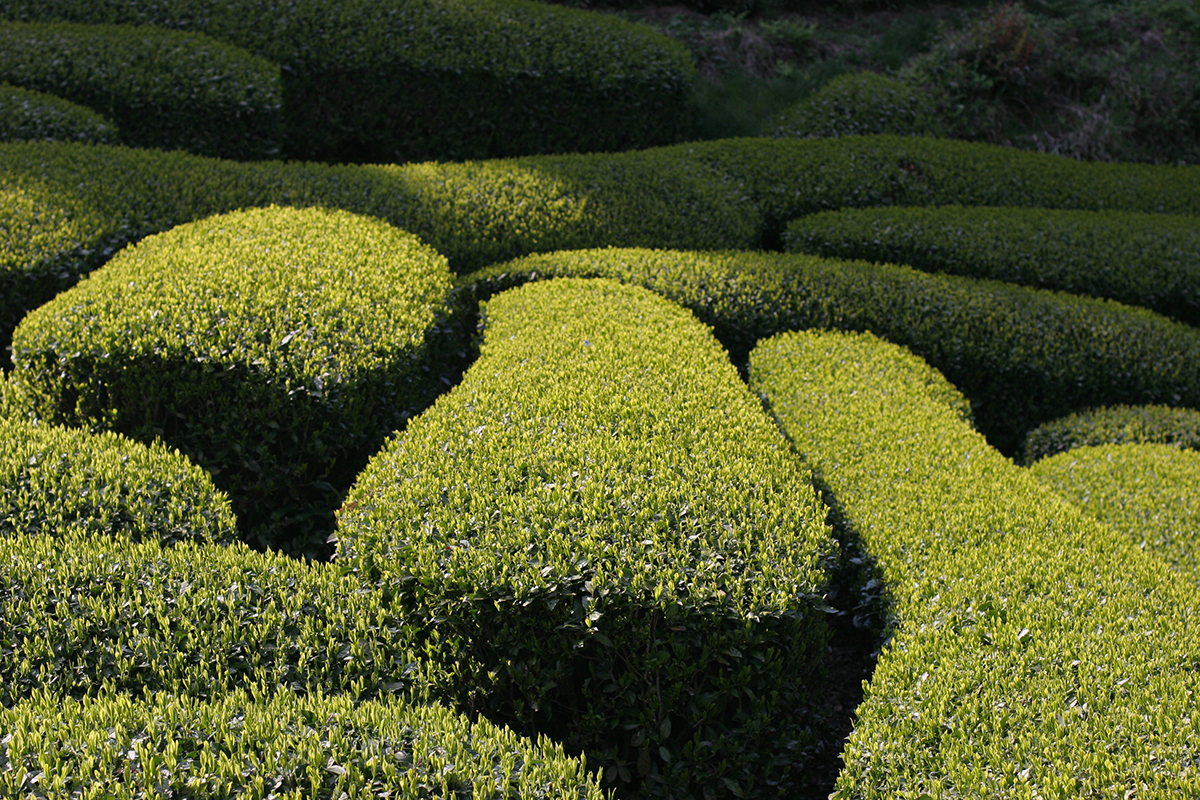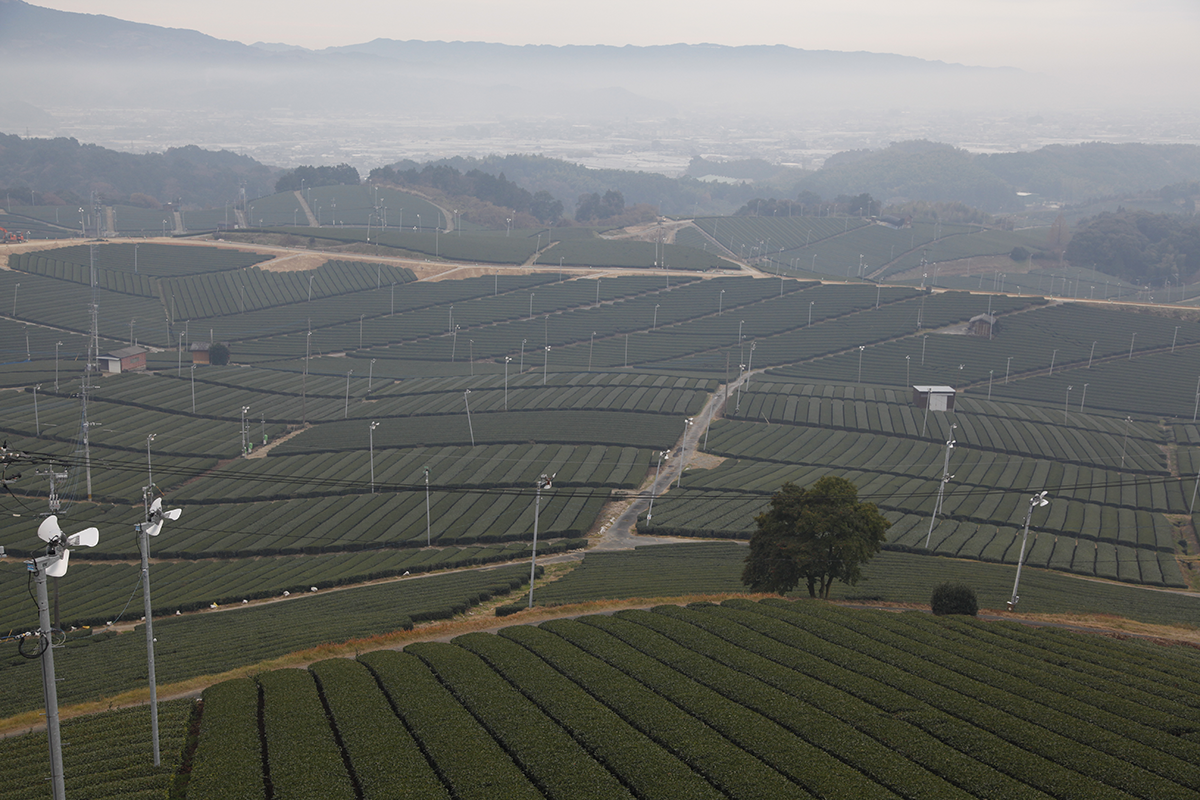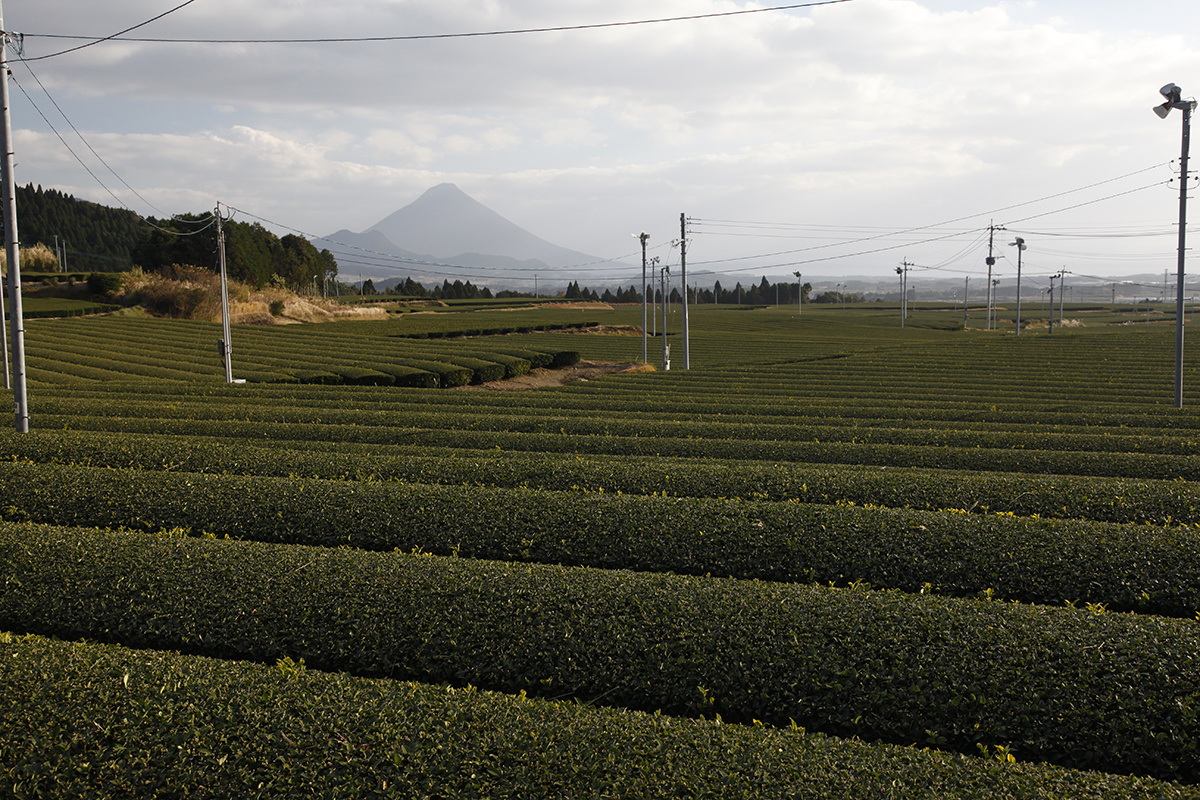Au Japon, la récolte la plus prestigieuse de l’année a lieu entre fin avril et début mai. C’est à ce moment-là que l’on manufacture les fameux ichibancha, ou thés de la première récolte. Au début du mois de juin a lieu la taille suivante. Elle donne des thés intéressants mais qui ne sont toutefois pas au niveau des précédents. Ici, dans les environs de Shizuoka, je participe à ma manière aux opérations, au volant d’une Kawasaki assez différente de celles que l’on peut voir circuler dans les rues de nos villes. Pour des raisons de coûts de main-d’œuvre, le Japon est l’un des rares pays au monde à avoir mécanisé ses opérations de cueillette.
Japan
From kettle to teapot
In Japan, the cast-iron kettle is one of the traditional objects used in the tea ceremony. This is the same kettle you’ll see in Japanese inns, over a hearth of embers. In winter, people sit by the hearth to warm their hands. As well as providing heat, the kettle holds the water used to make tea. The water is drawn from the kettle with a bamboo ladle and poured directly into the tea bowl, if it’s a powdered tea.
In a way, it was the French who invented the cast-iron teapot, back in the 1980s. Attracted by the graceful design of this vessel, they persuaded foundries in northern Japan to make much smaller versions, sometimes glazed, with a filter inside: thus the cast-iron teapot was born. For a long time, France was the main export market for this beautiful object that lasts a lifetime.
Mr Matsushita’s Shoju tea
The difference between the climate in the north and south of Japan, combined with the cultivars used in the country, some of which are earlier than others, mean the spring teas vary greatly in terms of when they become available. Traditionally, the well-known Japanese Ichibanchas are picked and processed at the start of May. But with global warming and the new cultivars being used by farmers branching out from the traditional Yabukita, some harvests are taking place earlier in the year. For example, Mr Matsushita’s Shoju, produced using an early tea cultivar grown on the island of Tanegashima, in the south of the archipelago, is already available. It has floral, vegetal and iodine notes. A foretaste of open horizons, and a pure delight.
What tea should you serve a coffee-drinker?
At some point, I’m sure you’ve asked yourself what tea to serve an obsessive coffee drinker. Some people can’t envisage an alternative to their single-origin pour-over or flat white. From my experience in such situations, I suggest you offer teas with burnt notes (toasted or roasted). These aromas are foregrounded in three famous Japanese teas: Bancha Hojicha, Shiraore Kuki Hojicha and Genmaicha. All three are accessible and easy-drinking thanks to their roasted flavours. They are an ideal bridge between coffee and tea.
Discovering distant horizons
In normal times, the summer is a wonderful time to head out to sea and get away from it all. This year, though, I doubt you’ll have an opportunity to discover distant horizons. The magnificent Kagoshima Bay, for example. It is overlooked by one of Japan’s most famous volcanoes, Sakurajima. During active spells, it spits out magnificent plumes of white smoke three or four times a day. They stretch across the sky over this part of Japan in the far south of the country, a region familiar to tea connoisseurs. The gyokuros from these parts are celebrated, and the soil into which the tea plants plunge their deep roots is made from lava.
Tea plants in winter
This is what a Japanese tea garden looks like in winter. Against the backdrop of volcanoes, rows of freshly clipped plants wait for spring to release them from their dormant period. They slumber under the benevolent watch of the fans, ready to chase away any frosty mists.
The Suizen-ji garden in Kumamoto
When I’m in Japan, I like to visit the gardens whenever I get a chance. They are incredibly beautiful. Peaceful, silent places where invisible gardeners with a keen eye for perfection trim every little shoot with scissors. They sculpt living things to create an incredible spectacle of a landscape, in which a simple mound symbolises Mount Fuji.
I come here often with a book, interspersing reading with gazing at the view. It’s pretty much my idea of heaven.
High-precision mechanical harvesting
In most tea-producing countries, tea leaves are harvested by hand. Japan is an exception, the main reason being the high cost of manpower. However, the sophisticated machinery used by Japanese farmers allows them to be very precise when harvesting. Only the young shoots are picked, which are then sorted with the most rigorous standards, in the factory, using machines with electronic eyes.
The first harvest is the best
Since the start of May, I’ve been tasting and choosing the best teas of the season from Japan. They’re called Ichibanchas because they’re the first to be harvested in the year. Japanese teas come from the regions of Shizuoka and Uji, and in the south of the archipelago. In the north of the country, the tea plant grown everywhere is Yabukita, whereas in the south, with its warmer climate, less Yabukita is grown. For example, here, near Kagoshima, the Yutaka Midori cultivar dominates, and represents nearly 60% of production.
A volcano in the landscape
On the island of Kyushu in Japan, it isn’t unusual to find a volcano in your field of vision. As someone who enjoys photography, this makes me very happy. The outline of these lava giants emphasises the controlled horizontality of the tea plants. They disrupt a rather too orderly landscape. They also remind us that the duration of harvests, the duration of seasons, the duration of human life, quite simply, is infinitesimal. Here is Mount Kaimon, which has a silhouette similar to that of Mont Fuji.

